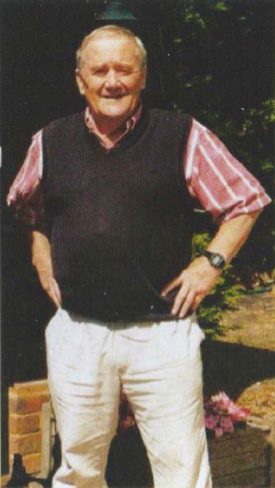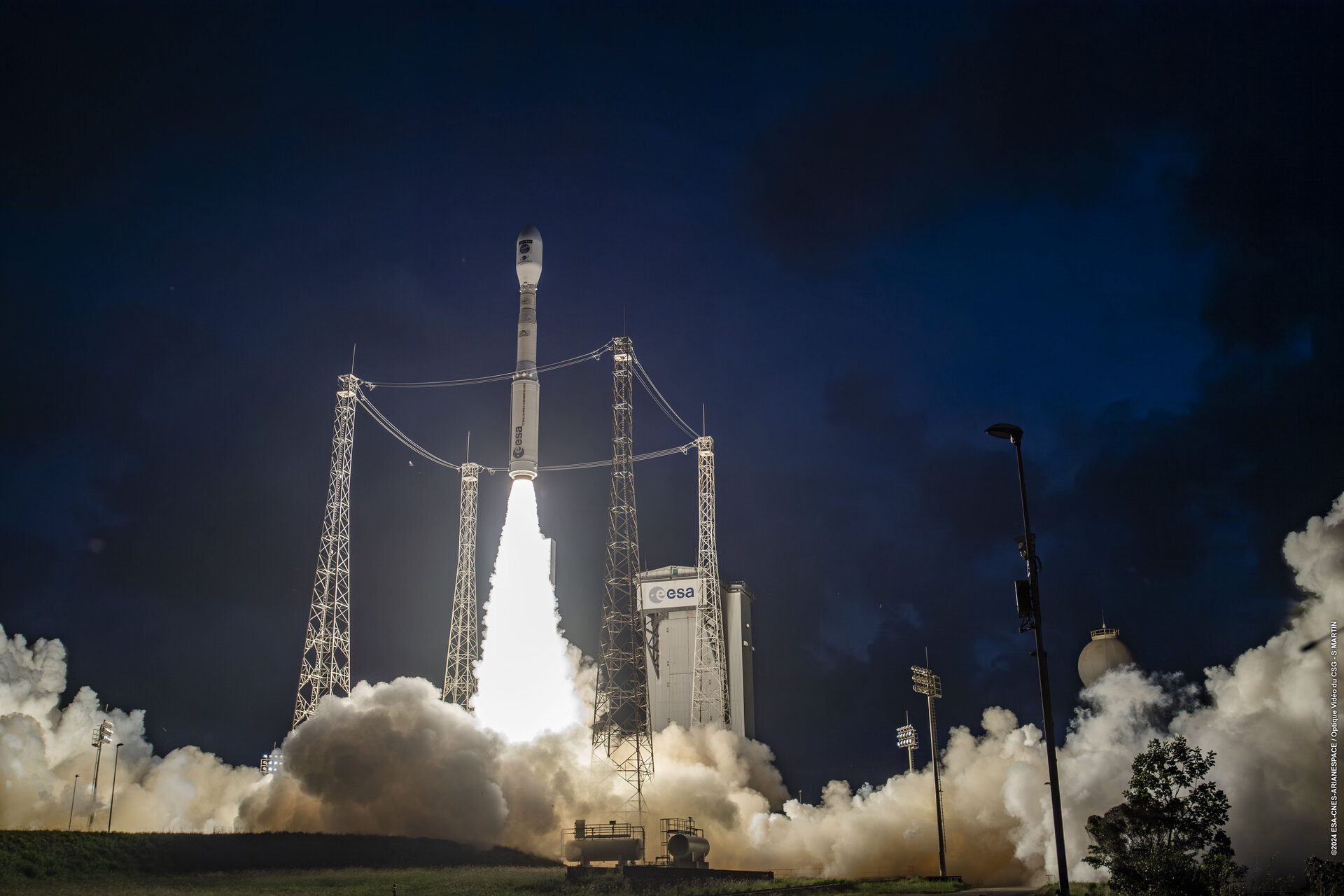Those of you who read our obituary columns would have noted that Seradata’s Space team’s one time boss Andrew Gleadow passed away in October. This writer was glad to attend his memorial service for him at St. Nicholas church in Chawton where Jane Austin once worshipped during the last period of her life, albeit that it had to be rebuilt in large part after a fire in 1870. At the service he met Andrew Gleadow’s navigator crewmate Peter King with whom Andrew was flying with when he crashed his Royal Navy Buccaneer S1 jet strike bomber in the South China Sea in 1965. He gave your correspondent the famous photographs that were put in the foyer of Martin Baker, the ejection seat maker, as a testament to their good work. Here they are below for your enjoyment:

Andrew Gleadow and his navigator Peter King depart their crashing Buccaneer S1. Courtesy: Via Peter King
They ejected from the Buccaneer S1 fighter bomber (courtesy of Martin Baker’s ejection seats) when one of its two Gyron Junior engines suddenly lost thrust (as they were apt to do). At the time Andrew’s aircraft was doing a touch and go landing after he missed the fourth wire on the aircraft carrier HMS Eagle in the South China Sea at the time.
While Andrew Gleadow’s crew mates were relieved he and his fellow aviator Peter King had survived the ejection, they were also annoyed. Andrew’s Buccaneer aircraft had been carrying their clothes and golf clubs inside its rotating bomb bay, which it had been transferring from a land base when it crashed.

…There go the golf clubs, as Andrew Gleadow’s Buccaneer S1 crashes into the sea. Courtesy: via Peter King
Of the photo above Peter King says: “The modest little splash on the left of the big one is me – the big one, by a process of elimination, I suppose is Andrew!”

Andrew Gleadow
While it is true that Andrew was short and slightly tubby (mind you, he might have been taller before the ejection) his splashdown might actually be very slightly left and behind of the big splash of the crashing aircraft in the picture.
Despite being injured in the ejection, Andrew was able to carry on with his naval aviation career and was briefly involved in test flying the Buccaneer S2 which, with new Spey turbofan engines replacing the underpowered (“constant thrust/variable noise”) Gyron Junior turbojet engines, came to be regarded as an excellent low strike aircraft and has claims to be the best one ever.
As we mentioned previously, Andrew later worked at Airclaims where your correspondent came under his command. Being a Yorkshireman with a chuckling sense of humour, he was, of course, sometimes deliberately difficult to get your expenses passed him (“what – you had dessert as well?”). Thankfully, Andrew was also susceptible to the Jedi mind control technique! Good old Andrew. God bless him, wherever he is.
Finally, just to tie this story into space, an ejection seat was famously – or at least famously afterwards – used at the end of Yuri Gagarin’s first orbital space flight in 1961. The Soviets were initially not keen to reveal this as they were fearful that this fact might affect the record books. Ejection seats were carried on other space missions including the early Space Shuttle flights, although once the other crew were carried they were deleted. Well, it would be unfair for the commander and pilot to survive but not the mission specialists!
That said, the Royal Air Force never minded that this was the position on the Vulcan nuclear bomber with the pilot and co-pilot getting ejection seats – but with the other three crew – the Air Electronics Officer (AEO, Navigator Radar, Navigator Plotter – having to struggle to an escape hatch in an emergency to parachute out. It is not for nothing that the RAF’s maxim is: “Never jump out of a serviceable aircraft”.






